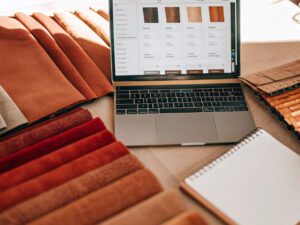Finding a reliable textile manufacturer in China can feel overwhelming. With so many options available, it’s essential to know where to look and how to evaluate potential partners. A good manufacturer will ensure consistent quality, competitive pricing, and timely delivery for your products.
To find a reliable textile manufacturer in China, use platforms like Alibaba1 or Global Sources, attend trade shows such as Canton Fair2, and perform thorough vetting through certifications, references, and sample reviews.
This guide dives deep into the steps, challenges, and strategies to help you make informed decisions.

Why is finding the right textile manufacturer important?
Choosing the right manufacturing partner is critical to the success of your business. But why does it matter so much?
The right manufacturer ensures consistent product quality, reduces risks, and supports your business’s long-term scalability. A poor choice, however, can lead to delays, quality issues, and financial loss.

The benefits of a reliable manufacturer
A reliable textile manufacturer can:
- Maintain consistent quality: High-quality fabrics directly impact customer satisfaction and brand reputation.
- Optimize costs: Working with the right partner ensures competitive pricing without compromising standards.
- Enable scalability: A capable manufacturer can handle increased order volumes as your business grows.
- Ensure compliance: Certified manufacturers follow international standards, protecting you from regulatory issues.
Benefits of a reliable manufacturer
| Benefit | Explanation |
|---|---|
| Consistent Quality | Ensures uniformity across all orders |
| Cost Optimization | Avoids overpaying while maintaining value |
| Scalability | Handles large volumes efficiently |
| Regulatory Compliance | Adheres to safety and ethical standards |
Where can you find textile manufacturers in China?
China is home to countless textile factories, but knowing where to look is half the battle. What are the best resources?
You can find textile manufacturers in China through online platforms, trade shows, and industry referrals. Each method has its own strengths and considerations.

Online platforms for sourcing manufacturers
1. Alibaba
Alibaba is a popular platform connecting global buyers with Chinese suppliers. Use filters to identify verified manufacturers and communicate directly through the platform.
- Advantages: Wide selection, transparency on supplier credentials.
- Tip: Look for Gold Suppliers or those with Trade Assurance for added security.
2. Global Sources
This platform focuses on export-oriented suppliers and offers detailed company profiles.
- Advantages: Curated supplier lists and product categories.
- Tip: Prioritize suppliers with detailed factory certifications.
3. Made-in-China
Another reliable platform, Made-in-China, emphasizes supplier verification and quality control.
- Advantages: Comprehensive product range and supplier profiles.
- Tip: Use the "Inquire Now" option to request detailed quotations.
Trade shows in China for direct connections
1. Canton Fair
The Canton Fair is one of the largest trade fairs globally, showcasing a wide range of textile suppliers.
- Advantages: Face-to-face interaction with manufacturers.
- Tip: Prepare a list of questions and take note of supplier capabilities during discussions.
2. Intertextile Shanghai Apparel Fabrics
This specialized trade show focuses exclusively on textiles and fabrics, such as Intertextile Shanghai Apparel Fabrics3.
- Advantages: Industry-specific exhibitors for efficient sourcing.
- Tip: Visit supplier booths to assess fabric samples firsthand.
Industry referrals and networks
Referrals from trusted industry contacts or networks like LinkedIn can lead you to reliable suppliers. Personal recommendations often come with firsthand insights into a manufacturer’s performance.
Best sources for textile manufacturers in China
| Source | Strength | Key Tip |
|---|---|---|
| Alibaba | Broad supplier base | Use filters for verified manufacturers |
| Canton Fair | In-person interactions | Prepare questions upfront |
| Industry Referrals | Trusted recommendations | Verify credentials |
How to vet a textile manufacturer in China?
Finding a manufacturer is just the first step. Proper vetting ensures you choose the right partner. But how do you do it?
To vet a manufacturer, check certifications, request samples, and review client testimonials. Conduct factory audits and verify compliance with international standards.

Steps to vet a textile manufacturer
1. Check certifications
Reliable manufacturers often hold certifications like ISO 90014 for quality management or OEKO-TEX5 for sustainable textiles. These credentials demonstrate adherence to global standards.
2. Request samples
Ask for fabric samples to evaluate quality, texture, and finish. Compare these samples to your requirements and competitors’ products.
3. Conduct a factory audit
Visiting the factory in person or hiring a third-party inspector ensures the supplier has the capacity and infrastructure to meet your needs. Look for:
- Production equipment and technology.
- Worker conditions and safety standards.
- Workflow efficiency.
4. Review client testimonials
Reach out to previous clients or read reviews to gain insights into the manufacturer’s reliability. Look for patterns in feedback, such as recurring issues with delivery times or quality.
Red flags to watch for
- Unverified credentials: Manufacturers unable to provide certifications.
- Poor communication: Delayed responses or lack of clarity during inquiries.
- Unrealistically low prices: Extremely cheap quotes often compromise quality or ethical practices.
Key vetting steps
| Vetting Step | Purpose | Action Tip |
|---|---|---|
| Check Certifications | Validate compliance with standards | Request ISO or OEKO-TEX docs |
| Request Samples | Assess fabric quality | Compare against competitors |
| Factory Audit | Verify production capabilities | Use third-party inspectors |
What are common challenges when sourcing from China?
Working with overseas manufacturers comes with its challenges. Identifying these issues early can help you avoid costly mistakes.
Common challenges include language barriers, quality inconsistencies, and logistical complexities. Proactive communication and clear agreements help mitigate these risks.
Sourcing challenges
1. Language barriers
Miscommunication can lead to errors in product specifications or timelines.
- Solution: Use detailed visual documentation, hire translators, or communicate through platforms with built-in translation tools.
2. Quality control issues
Without proper oversight, manufacturers may cut corners, leading to subpar products.
- Solution: Implement strict quality control processes, including third-party inspections.
3. Shipping and logistics
Delays or high costs can impact profitability.
- Solution: Work with experienced freight forwarders and plan shipments well in advance.
The importance of contracts
A detailed contract specifying product requirements, delivery timelines, and penalties for non-compliance protects both parties. Include clear terms for dispute resolution to avoid legal complications.
Challenges and solutions in sourcing
| Challenge | Impact | Solution |
|---|---|---|
| Language Barriers | Miscommunication in specs | Use translators |
| Quality Inconsistencies | Subpar product batches | Third-party inspections |
| Logistics Issues | Delays or added costs | Partner with freight forwarders |
How to build a strong relationship with your manufacturer?
A strong partnership with your manufacturer leads to better collaboration and long-term success. But how do you achieve that?
Building a strong relationship involves clear communication, consistent orders, and mutual respect. Treat your manufacturer as a partner, not just a provider.
Tips for fostering good relationships
1. Communicate regularly
Frequent updates on expectations, feedback, and future plans help keep everyone aligned.
2. Offer consistent orders
Manufacturers value clients who place regular orders. Even small but consistent purchases build trust.
3. Acknowledge their contributions
Recognize the manufacturer’s efforts, especially during peak seasons. Gestures like holiday greetings or small gifts can go a long way.
Collaborative problem-solving
When issues arise, work collaboratively to resolve them. Avoid assigning blame and focus on finding solutions that benefit both parties.
Relationship-building tips
| Tip | Benefit |
|---|---|
| Regular Communication | Ensures alignment on expectations |
| Consistent Orders | Builds trust and reliability |
| Recognition | Fosters goodwill and loyalty |
Conclusion
Finding a reliable textile manufacturer in China requires research, vetting, and strategic planning. Use platforms like Alibaba1, attend trade shows such as Canton Fair2, and prioritize due diligence with certifications like ISO 90014 or OEKO-TEX5. Consider specialized events like Intertextile Shanghai Apparel Fabrics3. Address challenges proactively and nurture strong partnerships for long-term success. With the right approach, you’ll secure a manufacturing partner that meets your business needs.
-
Find verified criteria ensuring trust in supplier selection. ↩ ↩
-
Gain proven methods to connect with verified textile manufacturers. ↩ ↩
-
Discover practical steps for sourcing quality textile materials. ↩ ↩
-
Learn certified standards ensuring truly global-quality product compliance. ↩ ↩
-
Access recognized guidelines ensuring eco-friendly and safe textiles. ↩ ↩













